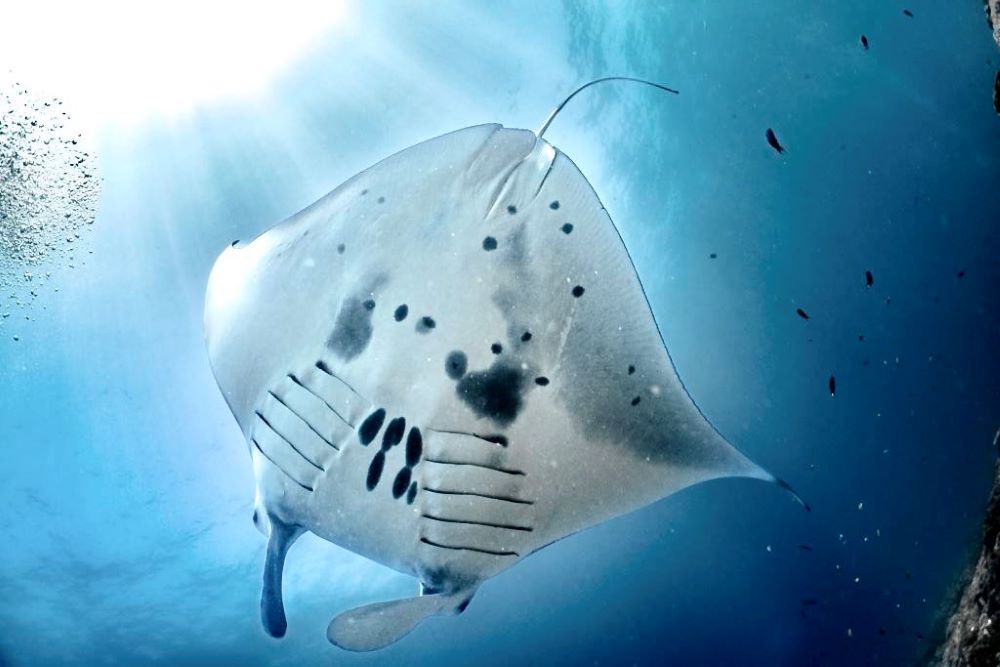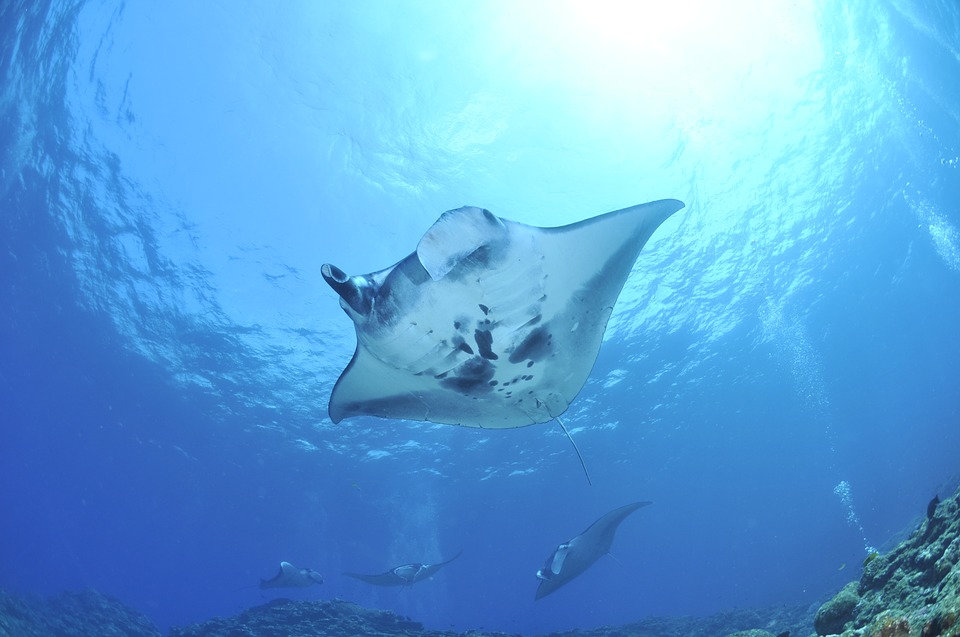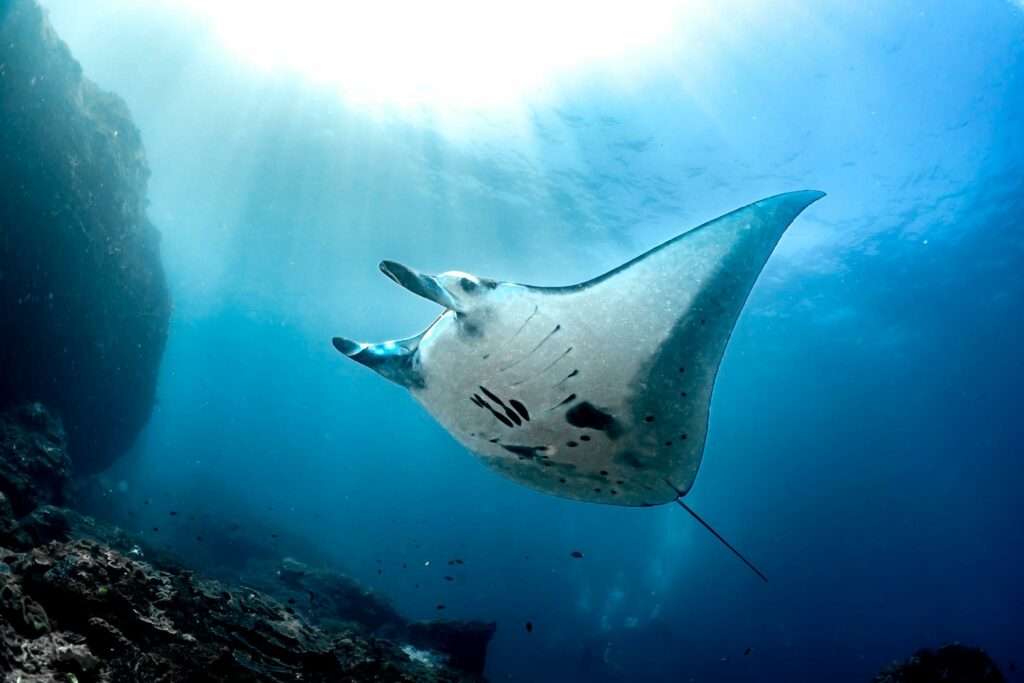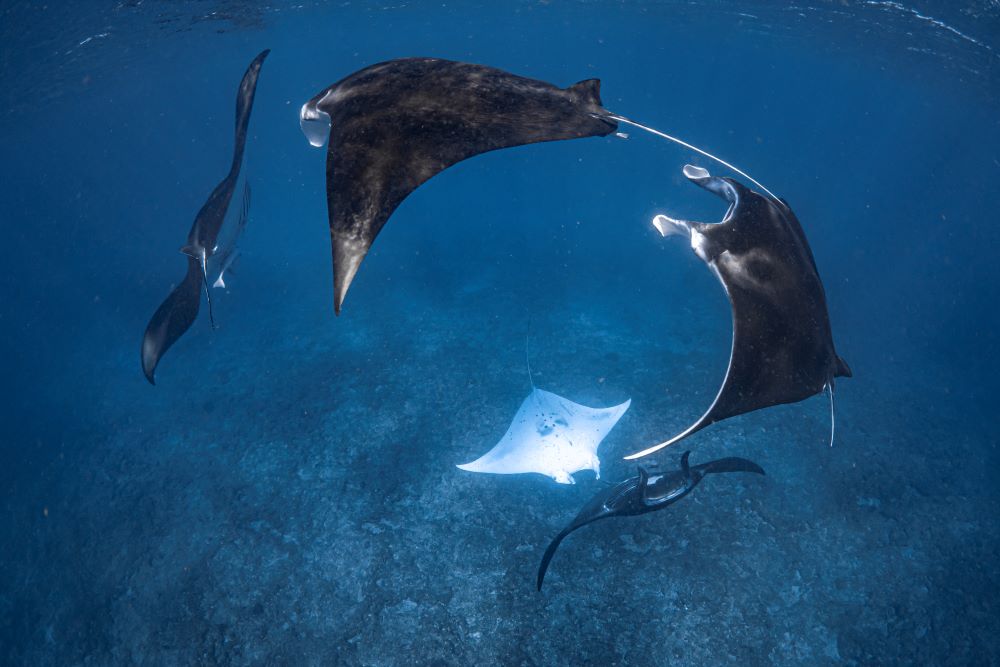Embark on an underwater adventure as we unveil captivating facts about manta rays. From their graceful and colossal presence to surprising social behaviours, explore the enchanting world of these majestic marine creatures as you plan your swim with them.
Disclosure: Please Note That Some Links In This Post May Be Affiliate Links, And At No Additional Cost To You, We Earn A Small Commission If You Make A Purchase. Commissions Go Toward Maintaining The Snorkel Spots Website.

How many Manta Ray Species are there?
There are two species of manta ray: the smaller Reef Manta Ray and the Giant Oceanic Ray.
As well as being a bit smaller than Giant Oceanic Rays, the two rays have different patterned white patches on the top, or dorsal, side of their body. The white patch on reef rays resembles a Y shape, it is more of a T on Oceanic manta rays.
Where do Manta Rays Live?
If you are going to see a Manta Ray it will most likely be a reef manta ray. They live around coral reefs in tropical climates. Oceanic Manta Rays also like warm, tropical water but spend most of their time further from land in the open ocean.
Are Manta Rays Friendly?
Despite their size Manta Rays are docile creatures that are not known to have attacked humans. In fact, they are quite curious and have been known to swim around divers and sit above them in the column of bubbles that comes from the diver’s breathing.
Their easy going nature is why it is possible to swim with manta rays and see them feed in places like Coral Bay in Western Australia.

What is a Group of Manta Rays called?
If you are lucky enough to see more two or more Manta Rays together you are looking at a squadron of Manta Rays.
Giant Size
Manta Rays are the largest species of rays. The Giant Oceanic Manta Ray (Manta birostris) can have a wingspan of up to 8.5m, be 9m long and weigh 3 tons. This makes them one of the largest fish in the ocean. The Reef Manta Ray is smaller but can still be up to 3.5m wide and over 5m long.
Manta Rays have ‘Fingerprints’
Just like people have a unique fingerprint, Manta Rays also have unique markings on their belly. They are born with markings that stay the same for the life which is a useful form of identification for researchers.

What are the Fins in front of their Mouth called?
One of the most unusual characteristics of a manta ray are the two large fins either side of their mouth. They are called cephalic fins. While they are mostly used during feeding, they might also play a role in communication and steering.
So how do Manta Rays Feed?
Manta Rays are filter feeders. They open their mouths and allow plankton rich water to flow over structures called gill rakers or gill plates. While some rays do have teeth, you won’t find any teeth on a Manta Ray.
What are Baby Manta Rays called?
Manta rays give birth to live young – and they are called pups. Manta Rays carry their unborn young for about a year and have a pup about every 4 years. Manta rays can breed from 8 – 10 years of age.

Manta Ray Acrobatics
Like dolphins, manta rays are known for their acrobatic displays in the water where they do somersaults and barrel rolls. They are also known for leaping out of the water.
Watching a squadron of them barrel roll as they feed on plankton-rich water was one of the best things I have seen snorkelling (at Cora Bay). Their ‘flying’ behaviour is less well understood but it could be a mating ritual or used as a form of communication.
How Long do Manta Rays Live?
No one is quite sure how long Manta Rays live, but it is thought they can be up to 50 years old.
- Fun Facts about Sharks - February 15, 2024
- Where can you Safely Swim with Sharks in Australia? - February 15, 2024
- How to Snorkel – 15 Tips for Beginners - February 15, 2024

